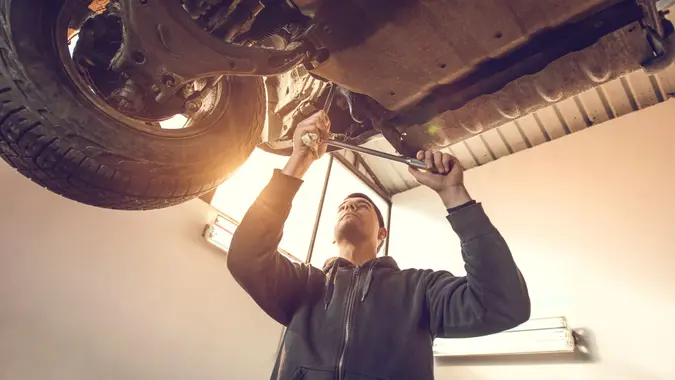How ‘Eat Now, Pay Later’ Could Sneakily Affect Your Paycheck Before You Even Get It

Commitment to Our Readers
GOBankingRates' editorial team is committed to bringing you unbiased reviews and information. We use data-driven methodologies to evaluate financial products and services - our reviews and ratings are not influenced by advertisers. You can read more about our editorial guidelines and our products and services review methodology.

20 Years
Helping You Live Richer

Reviewed
by Experts

Trusted by
Millions of Readers
Klarna (an AI-powered installment lender) and DoorDash (a food delivery app) have partnered up to offer more ways to pay for groceries, meals, retail items and more. But why?
These “flexible payment options are essential to meeting our customers’ needs,” Anand Subbarayan, DoorDash’s head of money products, said in a press release.
While there may be some benefits here, there are also some downsides that could end up affecting your finances.
The Flexible Payment Options
With this new partnership, DoorDash customers will have three options to pay for food (through Klarna): Pay Later, Pay in 4 and Pay in Full. With pay later, per the press release, customers can defer their payments, whereas with Pay in 4, customers can pay in installments.
Note that these payment options will be available only to U.S.-based DoorDash customers.
How This Deal Could Affect Your Paycheck
Who doesn’t love flexibility and convenience? But when it comes to using food loans — or “buy now, pay later” type plans — it can also have disastrous consequences on your paycheck.
“Finances focused backwards are generally a problem,” said Melanie Musson, a personal finance expert with Clearsurance.com. “The more money you spend paying for things you’ve already bought, the less money you have to improve your life and finances.”
It’s also possible customers could use the “buy now, pay later” system on other food deliveries while still paying off prior purchases. This might not be a problem for those who are used to juggling multiple payments, but if they’re using the “buy now, pay later” option because finances are tight, it could become a major issue.
‘Eat Now, Pay Later’ Is a Trap Waiting to Happen
The average U.S. consumer spent $1,224 a month on debt last year, according to Experian data. This is 5.2% more than they spent the year before.
For those who aren’t careful with their money, or who are already living paycheck to paycheck, the ease of paying for food in installments only adds to the overall debt burden.
“Since many people already have a problem with credit card debt thanks to impulsive spending, having a new option to cover a different impulse (hunger and cravings) will only lead to increased debt,” Musson said.
On X, Douglas A. Boneparth, president of Bone Fide Wealth, had this to say: “Eat now, pay later is an awful trap. If you need to borrow to have a burrito delivered to you, you are the product. Nothing more. These companies aren’t helping people. In fact, they are taking advantage of them.”
The Klarna and DoorDash deal could be a more affordable alternative to high-interest credit cards, but “food loans” can add up, which can cut into your paycheck before you even get to spend it.
More From GOBankingRates
Sources
- DoorDash, “DoorDash Partners with Klarna to Offer US Customers Even More Convenience with Flexible Payments.”
- Melanie Musson, Clearsurance.com
- Experian, “Experian 2024 Consumer Credit Review.”
- Douglas A. Boneparth, X post.
 Written by
Written by  Edited by
Edited by 

























